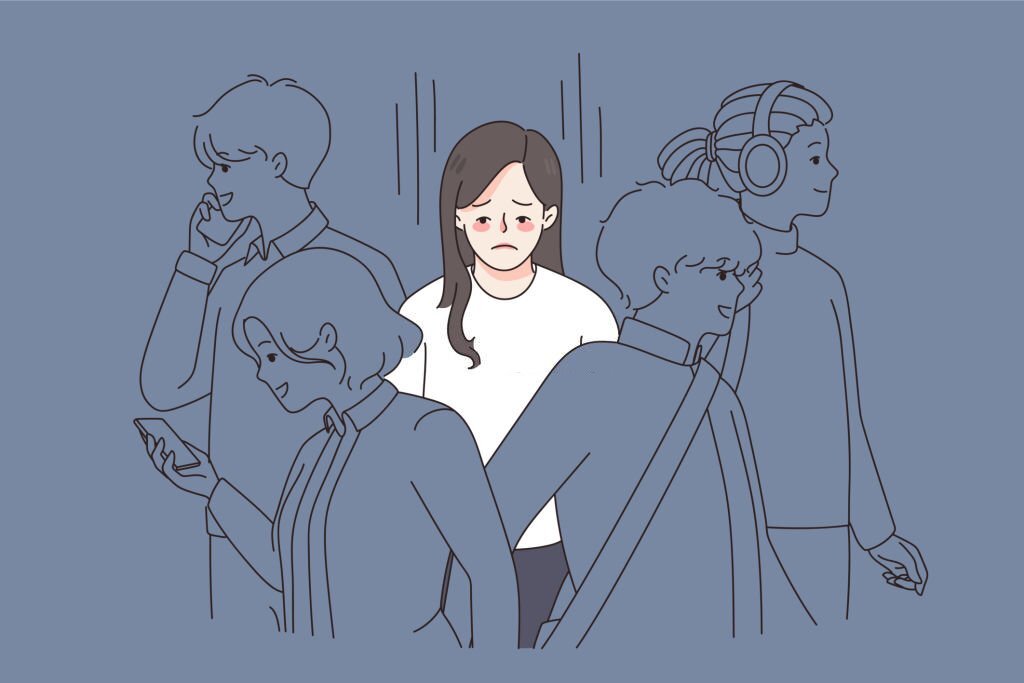Social phobia, clinically recognized as social anxiety disorder (SAD), is a chronic mental health condition characterized by an intense fear of social or performance situations where embarrassment or scrutiny is possible. This debilitating condition can significantly impair daily functioning, work performance, relationships, and overall quality of life.

Understanding Social Phobia: Definition and Scope
Social phobia involves an overwhelming fear of being judged, watched, or humiliated during social interactions. It goes beyond shyness and persists for six months or more, often leading to avoidance behaviors, emotional distress, and physical symptoms in feared situations.
Core Symptoms of Social Phobia
Individuals with social phobia experience both psychological and physiological symptoms, particularly when anticipating or engaging in social interaction.
Psychological Symptoms:
- Intense fear of being negatively evaluated
- Persistent worry about acting awkward or being embarrassed
- Avoidance of social settings or public speaking
- Anticipatory anxiety before events
Physical Symptoms:
- Blushing
- Sweating
- Trembling
- Rapid heartbeat
- Nausea or stomach discomfort
- Muscle tension
These reactions occur even when individuals recognize the fear as excessive or irrational.
Common Triggers of Social Anxiety Disorder
Social phobia can be situation-specific or generalized. Common triggers include:
- Public speaking
- Meeting new people
- Being the center of attention
- Eating or drinking in public
- Using public restrooms
- Speaking to authority figures
The intensity of fear may vary depending on past experiences, perceived judgment, and individual personality traits.
Causes and Risk Factors of Social Phobia
Biological Factors:
- Genetics: First-degree relatives are more likely to develop social anxiety.
- Brain structure: Hyperactivity in the amygdala, the brain’s fear center, contributes to heightened responses.
Environmental Influences:
- Childhood bullying or ridicule
- Overprotective or controlling parenting
- Traumatic social experiences
- Learned behaviors from anxious role models
A combination of genetic predisposition and environmental conditioning typically leads to the development of the disorder.
Social Phobia vs. Normal Shyness
While both involve discomfort in social situations, social phobia is persistent, intense, and impairs functioning. Shyness does not necessarily interfere with one’s ability to function in daily life.
| Feature | Shyness | Social Phobia |
|---|---|---|
| Duration | Temporary or situational | Long-lasting (6+ months) |
| Impact | Mild discomfort | Severe functional impairment |
| Avoidance | Occasional | Frequent and disruptive |
| Self-awareness | May not seek help | Aware but feels helpless |
Diagnostic Criteria for Social Phobia (DSM-5)
According to the Diagnostic and Statistical Manual of Mental Disorders (5th edition), the following criteria must be met:
- Persistent fear or anxiety about one or more social situations
- Fear of acting in a way that will be negatively evaluated
- Avoidance or endurance with intense anxiety
- Duration of symptoms lasting 6 months or more
- Significant distress or impairment in social, occupational, or other areas
Evidence-Based Treatments for Social Phobia
1. Cognitive Behavioral Therapy (CBT)
CBT is the first-line treatment for social anxiety and has the strongest evidence base. It focuses on restructuring negative thought patterns and gradually exposing individuals to feared situations.
Key Components of CBT:
- Cognitive restructuring to challenge irrational beliefs
- Exposure therapy to desensitize anxiety triggers
- Social skills training for confidence building
- Behavioral experiments to test fears in real life
2. Pharmacotherapy
Medications may be prescribed for moderate to severe cases or when CBT alone is insufficient.
- SSRIs (e.g., sertraline, paroxetine) are first-line medications
- SNRIs (e.g., venlafaxine) can also be effective
- Beta-blockers (e.g., propranolol) are used for performance anxiety
- Benzodiazepines may be used short-term, but are not recommended for long-term use due to dependency risks
3. Mindfulness and Acceptance-Based Therapies
Mindfulness-Based Cognitive Therapy (MBCT) and Acceptance and Commitment Therapy (ACT) teach individuals to observe thoughts without judgment and commit to valued actions despite anxiety.
4. Group Therapy
Group-based CBT offers a safe environment for exposure and social skill development, while also reducing feelings of isolation.
Lifestyle Modifications and Coping Strategies
- Regular physical activity to reduce stress hormones
- Adequate sleep to improve emotional regulation
- Limiting caffeine and alcohol, which can worsen anxiety
- Deep breathing and progressive muscle relaxation techniques
- Setting small, achievable social goals for gradual exposure
When to Seek Professional Help
Seek assistance if:
- Social fears interfere with daily life, education, or career
- Avoidance is limiting personal or professional growth
- Symptoms persist for six months or longer
- Anxiety leads to panic attacks or depression
Early intervention leads to better treatment outcomes and prevents escalation of comorbid conditions.
Frequently Asked Questions:
Is social phobia curable?
While not “curable” in the traditional sense, social phobia is highly treatable with long-lasting improvement possible through therapy, medication, or both.
Can social phobia worsen over time?
Without treatment, symptoms can worsen and lead to depression, substance misuse, or social isolation.
How common is social anxiety disorder?
Social phobia affects approximately 7% of the population, making it one of the most prevalent anxiety disorders.
Can children develop social phobia?
Yes. Social anxiety often begins in early adolescence, and early signs should be addressed promptly.
Can I overcome social phobia without medication?
Yes. Many individuals recover through CBT alone, particularly when combined with lifestyle changes and gradual exposure.
Social phobia is a serious yet treatable mental health condition. By understanding its origins, recognizing the symptoms, and applying evidence-based interventions, individuals can regain control over their lives and restore confidence in social interactions. With appropriate support and structured treatment, recovery is not only possible—it is attainable.

